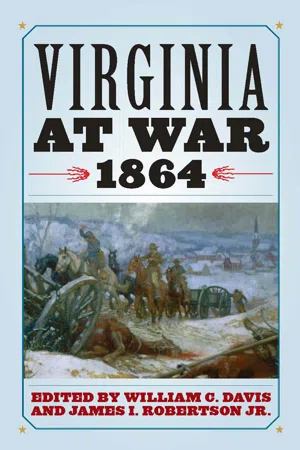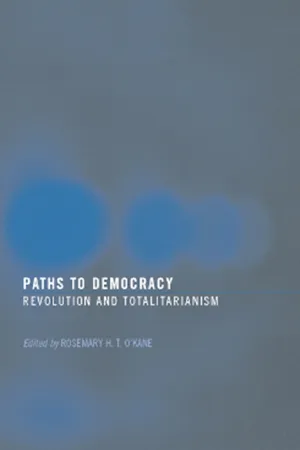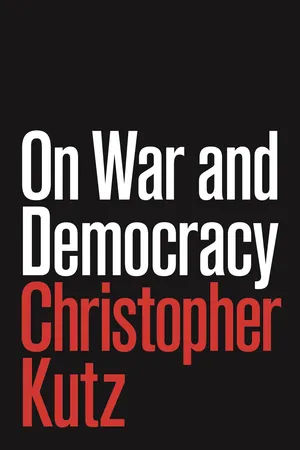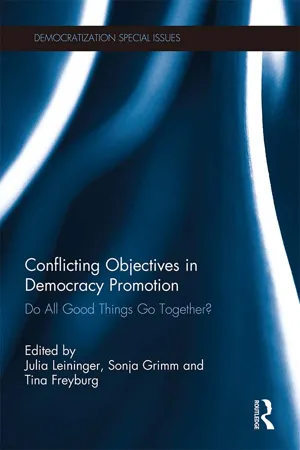History
Civil War Democracy
Civil War Democracy refers to the political and social changes that occurred in the United States during the Civil War. It was characterized by the expansion of democracy, the abolition of slavery, and the centralization of power in the federal government. This period marked a significant turning point in American history.
Written by Perlego with AI-assistance
4 Key excerpts on "Civil War Democracy"
Learn about this page
Index pages curate the most relevant extracts from our library of academic textbooks. They’ve been created using an in-house natural language model (NLM), each adding context and meaning to key research topics.
- eBook - ePub
- William C. Davis, James I. Robertson, William C. Davis, James I. Robertson(Authors)
- 2009(Publication Date)
- The University Press of Kentucky(Publisher)
Politics in Civil War Virginia
A Democracy on Trial
Aaron Sheehan-Dean
If war is really “the continuation of politics by another means,” as Carl von Clausewitz said, then Virginia found war and politics so intertwined by 1864 that one could hardly be distinguished from the other. “We appeal to the voters to give their support to . . . good men and patriots . . . [who are] best suited to the respective stations required to be filled,” declared a Richmond editor the year before.1 At first blush, such an appeal sounds like standard fare for mid-nineteenth-century America. Readers could be expected to know whom the paper meant by “good men” because papers existed to advance partisan interests. The curious thing about the above quote, which pertained to the 1863 Virginia state elections, was that it was intended to be read straight, not with a wink and a nod. Among the most important changes made by the Confederate States of America, when it organized in February 1861, was the informal abolition of political parties. This necessitated a major shift in thinking in Virginia, where the second party system remained vital through the secession crisis.2 Virginians did adapt, though not without difficulty. The same may be said of the other wartime challenges faced within the state. Politicians and voters had to reckon with new issues and a new context that defied traditional ideological divisions. The partition of the state, the disintegration of slavery, the crisis of food and housing, and the increasingly centralized nature of Confederate political authority all required new responses. Through it all, Virginians struggled to fit the new demands of war into their old conceptions of politics; by war’s end, both concepts and even politics itself seemed insufficient.3 - eBook - ePub
Paths to Democracy
Revolution and Totalitarianism
- Rosemary H. T. O'Kane(Author)
- 2004(Publication Date)
- Routledge(Publisher)
It is certainly reasonable to view the American Civil War, as Dahl does, as a ‘very doubtful case’, but not because it undermines Moore’s general claim for the importance of violent revolution but because of the absence of lords and peasants as normally defined. Moore’s case of the American Civil War, nevertheless, valuably draws attention to two important considerations. First, it offers a timely reminder about the centrality to Moore’s argument of alliances between classes and the potential for reaction and not only for democracy. His argument is that had the Western farmers aligned not with the Northern industrialists but with the Southern plantation owners then America would have taken not the democratic but the reactionary route, to fascism. Secondly, and therefore, the case draws attention to the problem with American ‘democracy’ after the War of Independence – the continuation of slavery.As Dahl’s (1971) questioning of America as a democracy, before 1968, because of the suffrage denied to Southern African-Americans attests, he too is concerned about slavery and civil rights. For Dahl, full inclusiveness is essential to count as a polyarchy but the process of democratization begins with less than full inclusiveness, and, indeed, far from perfect liberalization. Dahl’s criticism of Moore is, therefore, important. Democracy is a political form; it involves the setting up of institutions and structures. As such the existence of such institutions and structures is identifiable though they may later be destroyed (as in Dahl’s example of Germany, 1919, and the setting up of the Weimar Republic) and democracy may be constructed through outside insistence and help (as in Germany in 1945). The American War of Independence, resulting as it did in an early form of presidential democracy and a republican constitution, was no less an event for democracy, therefore, than the American Civil War, the English Civil War or the French Revolution. So, too, the Weimar Republic, which was for a time a notable example of working democracy. Dahl’s point, also, is that neither Britain nor France jumped straight to democracy and, in France’s case ‘collapses or revolutionary displacement’ occurred in 1848 and 1870, with the first attempt at democracy, in 1789, collapsing in 1792. In this light, it does, indeed, seem odd that analysis is made of America in the Civil War, passing over the War of Independence and that so much attention is given to France in 1789 without continuing on to consideration of 1848 and 1870. - eBook - ePub
- Christopher Kutz(Author)
- 2016(Publication Date)
- Princeton University Press(Publisher)
1 INTRODUCTION: WAR, POLITICS, DEMOCRACY We live in an era of belligerent democracy, an unhappy sequel to the peaceful democratic transitions that unfolded across Latin America and Eastern Europe at the end of the twentieth century. Democratic aspirations are increasingly voiced across the Mediterranean in the new century—leading more often than not to civil conflict rather than electoral transitions. 1 We live also in an era of democratic wars, when democratic states pursue violent conflict in the name of peaceable ends, ranging from disarmament to democratization to securing access to natural resources. Despite Churchill’s famous quip—“Democracy is the worst form of government, except for all those other forms that have been tried from time to time” 2 —democracy is seen as a source of both domestic and international flourishing. Democracy, understood roughly for now as a political system with wide suffrage in which power is allocated to officials by popular election, can solve or help solve a host of problems with stunning success. It can solve the problem of revolutionary violence that condemns autocratic regimes, because mass politics can work at the ballot box rather than the streets. It can help solve the problem of famine, because the systems of free public communication and discussion that are essential to democratic politics are the backbone of the markets that have made democratic societies far richer than their competitors. It can help solve the problem of environmental despoliation, which occurs when those operating polluting factories (whether private citizens or the state) do not need to answer for harms visited upon a broad public - eBook - ePub
Conflicting Objectives in Democracy Promotion
Do All Good Things Go Together?
- Julia Leininger, Sonja Grimm, Tina Freyburg(Authors)
- 2017(Publication Date)
- Routledge(Publisher)
18 To be fair, of these seven successful cases El Salvador and the Philippines should not be counted as cases of post-civil war democratization, because democratic transitions had begun before the civil war was officially resolved and there was no change in the level of democracy during the post-conflict period. The most spectacular change in the measure of democracy took place in Mozambique (+12 points). The other 18 cases remained in a state of anocracy (a hybrid regime with a Polity score between ‘−5’ and ‘5’), autocracy (Rwanda), or non-independent polity (BiH and Lebanon).The UN has carried out various types of peacekeeping operations (PKOs) in 19 of the cases of negotiated ends to hostilities: observer missions, traditional PKOs, multidimensional PKOs, and peace enforcement missions.19 Power-sharing was arranged in 13 cases of UN involvement in negotiated settlements. The power-sharing index in the last column of Table 1 was created by examining the actual texts of peace agreements, calculating a five-point measure representing provisions for the sharing of executive, electoral, territorial, and veto powers among civil war adversaries.20 The quantitative literature on UN PKOs suggests that a more powerful UN operation, such as a multidimensional PKO and enforcement mission, is likely to produce a better outcome in terms of peace and democracy promotion than a weakly mandated mission.21 In the same vein, a more comprehensive power-sharing agreement is presumed to lead to more sustainable peace and democracy in post-civil war countries.22 Thus, the most likely success case for the UN would be BiH, where a strong peace enforcement mission was conducted under Chapter VII



